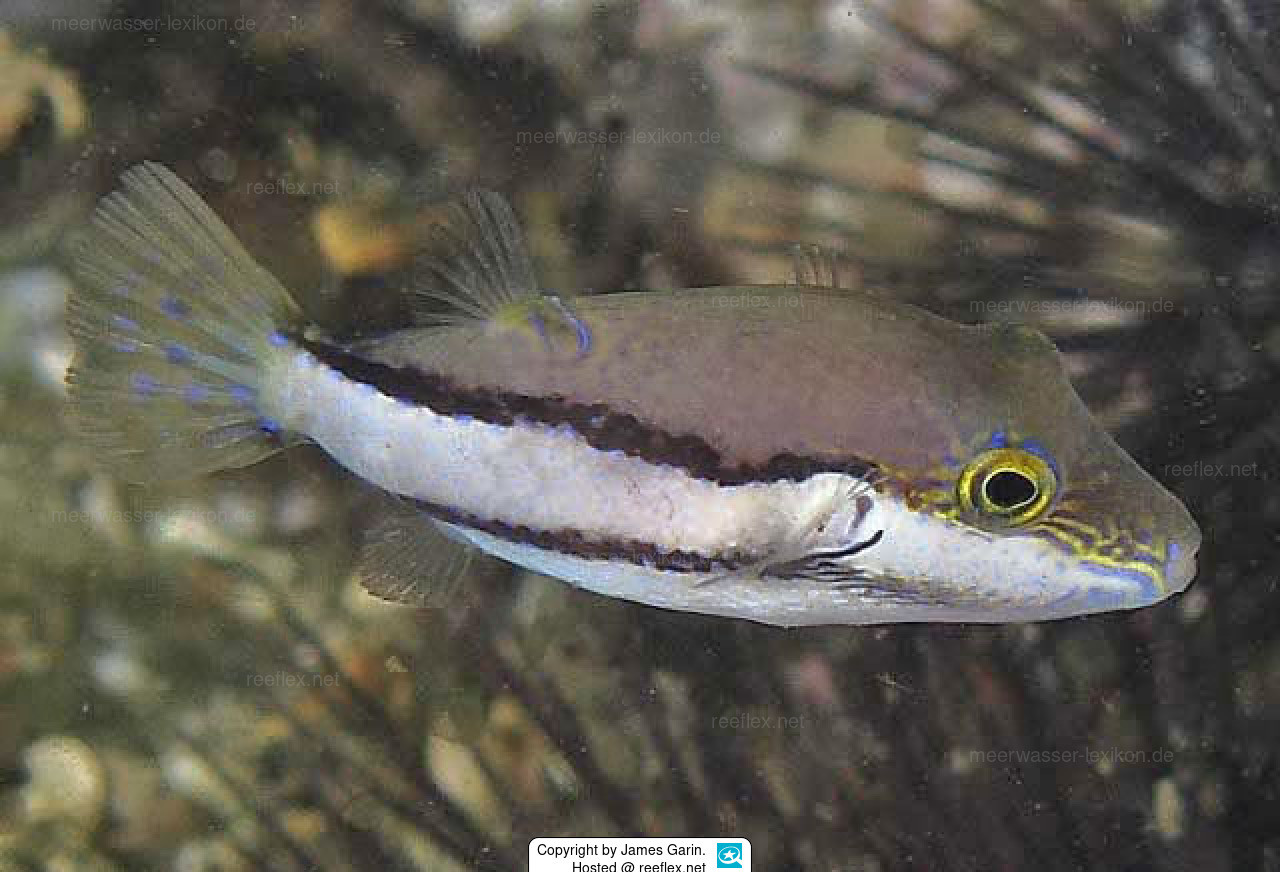Info
Moura & Castro, 2002
Canthigaster jamestyleri is found on the east coast of America from South Carolina to the Gulf of Mexico and as far south as the Caribbean.
The name “goldface toby” is fitting when you look at the animal's head and eyes.
The pufferfish is harmless to humans, but it can be dangerous if not prepared properly for consumption.
As a general rule, pufferfish should not be “animated” to form the spherical shape for which they are named, as this process is extremely stressful for the animals.
In the sea, pufferfish live at greater depths of up to 100 meters, probably above hard bottoms.
We would like to thank Jim Garin (USA) for the first photo of Canthigaster jamestyleri.
Classification: Biota > Animalia (Kingdom) > Chordata (Phylum) > Vertebrata (Subphylum) > Gnathostomata (Superclass) > Pisces (Superclass) > Actinopteri (Class) > Tetraodontiformes (Order) > Tetraodontidae (Family) > Canthigaster (Genus) > Canthigaster jamestyleri(Species)
Puffer fish can produce toxins such as tetrodotoxin and saxitoxin and accumulate them in the skin, gonads and liver.
The toxin tetrodotoxin, which is contained in the fugu, is 1000 times more toxic than cyanide and there is no antidote serum, death then occurs by respiratory paralysis
The degree of toxicity varies depending on the species, but also on the geographical area and season.
We recommend that you never prepare puffer fish yourself, as the risk of fatal poisoning is far too great.
If you still absolutely want to eat puffer fish meat (fugu), then the fish should only be slaughtered by a Japanese special chef with a license and several years of training.
Only the training of these special chefs can guarantee the correct slaughter, complete removal and proper disposal of all toxic parts of the fish.
Canthigaster jamestyleri is found on the east coast of America from South Carolina to the Gulf of Mexico and as far south as the Caribbean.
The name “goldface toby” is fitting when you look at the animal's head and eyes.
The pufferfish is harmless to humans, but it can be dangerous if not prepared properly for consumption.
As a general rule, pufferfish should not be “animated” to form the spherical shape for which they are named, as this process is extremely stressful for the animals.
In the sea, pufferfish live at greater depths of up to 100 meters, probably above hard bottoms.
We would like to thank Jim Garin (USA) for the first photo of Canthigaster jamestyleri.
Classification: Biota > Animalia (Kingdom) > Chordata (Phylum) > Vertebrata (Subphylum) > Gnathostomata (Superclass) > Pisces (Superclass) > Actinopteri (Class) > Tetraodontiformes (Order) > Tetraodontidae (Family) > Canthigaster (Genus) > Canthigaster jamestyleri(Species)
Puffer fish can produce toxins such as tetrodotoxin and saxitoxin and accumulate them in the skin, gonads and liver.
The toxin tetrodotoxin, which is contained in the fugu, is 1000 times more toxic than cyanide and there is no antidote serum, death then occurs by respiratory paralysis
The degree of toxicity varies depending on the species, but also on the geographical area and season.
We recommend that you never prepare puffer fish yourself, as the risk of fatal poisoning is far too great.
If you still absolutely want to eat puffer fish meat (fugu), then the fish should only be slaughtered by a Japanese special chef with a license and several years of training.
Only the training of these special chefs can guarantee the correct slaughter, complete removal and proper disposal of all toxic parts of the fish.







 James Garin (†), USA
James Garin (†), USA






























